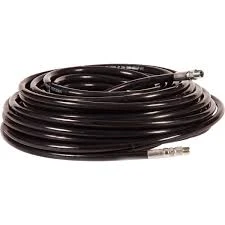ford f250 power steering hose replacement
Replacing the Power Steering Hose on a Ford F-250 A Comprehensive Guide
The Ford F-250 is a popular heavy-duty truck known for its robust performance and durability. However, like any vehicle, it may experience wear and tear over time, particularly concerning its power steering system. One of the most common issues is a leaking or worn power steering hose. Replacing the power steering hose is essential for maintaining the vehicle's handling and steering performance. This article will guide you through the process of replacing the power steering hose on your Ford F-250, ensuring your truck remains functional and safe.
Understanding the Power Steering System
Before delving into the replacement process, it’s crucial to understand the role of the power steering system. The power steering hose is a vital component that carries hydraulic fluid from the power steering pump to the steering gear. This fluid assists in steering the vehicle, making it easier to maneuver, especially under heavy loads or at low speeds. If the hose becomes cracked or leaking, it can lead to reduced steering performance and potential damage to other components.
Tools and Materials Needed
To replace the power steering hose on your Ford F-250, you will need the following tools and materials
- New power steering hose (specific to your F-250 model year) - Socket set and ratchet - Wrenches (including adjustable) - Screwdrivers (flathead and Phillips) - Fluid catch pan - Power steering fluid - Clean rags - Safety glasses and gloves
Step-by-Step Replacement Process
1. Preparation Begin by parking your F-250 on a level surface, turning off the engine, and allowing it to cool down. Engaging the parking brake is crucial for safety.
ford f250 power steering hose replacement

2. Accessing the Hose Open the hood and locate the power steering pump, which is typically found near the engine's front. Depending on your truck's year, you might need to remove some obstructing components such as the engine cover or air intake.
3. Draining the Fluid To avoid spills, place a fluid catch pan beneath the power steering pump. Detach the hose from the pump using your wrench or socket set. It’s advisable to wear safety glasses since fluid can spray out. Allow the old fluid to drain completely into the catch pan.
4. Removing the Old Hose Next, locate the other end of the power steering hose connected to the steering gear. Use a wrench to detach this end as well. Carefully remove any clamps or brackets holding the hose in place. Once it’s disconnected, remove the old hose from the engine compartment.
5. Installing the New Hose Take your new power steering hose and position it in place. Connect one end to the power steering pump and the other end to the steering gear, ensuring that it fits snugly. Replace any clamps or brackets as needed to secure the hose.
6. Refilling Power Steering Fluid After securing the new hose, it’s time to refill the power steering fluid. Remove the cap from the power steering reservoir and pour in the appropriate fluid according to your Ford F-250's specifications.
7. Bleeding the System Start the engine and turn the steering wheel from lock to lock several times. This process helps to bleed any air trapped in the system. Check for leaks around the new hose connection points as the system pressurizes. If you notice any leaks, tighten the connections as necessary.
8. Testing Once you’ve ensured there are no leaks, test drive your F-250. Observe how the steering feels and listen for any unusual noises indicating potential issues.
Conclusion
Replacing the power steering hose on a Ford F-250 is a manageable task that can significantly improve your vehicle's handling and safety. By following this guide, you can ensure that your truck remains in top condition. Regular maintenance of the power steering system is essential, as neglecting it can lead to more severe issues down the line. Always consult your owner’s manual for specific guidance related to your model year and remember to dispose of the old fluid and parts responsibly.
-
Ultimate Spiral Protection for Hoses & CablesNewsJun.26,2025
-
The Ultimate Quick-Connect Solutions for Every NeedNewsJun.26,2025
-
SAE J1401 Brake Hose: Reliable Choice for Safe BrakingNewsJun.26,2025
-
Reliable J2064 A/C Hoses for Real-World Cooling NeedsNewsJun.26,2025
-
Heavy-Duty Sewer Jetting Hoses Built to LastNewsJun.26,2025
-
Fix Power Steering Tube Leaks Fast – Durable & Affordable SolutionNewsJun.26,2025

